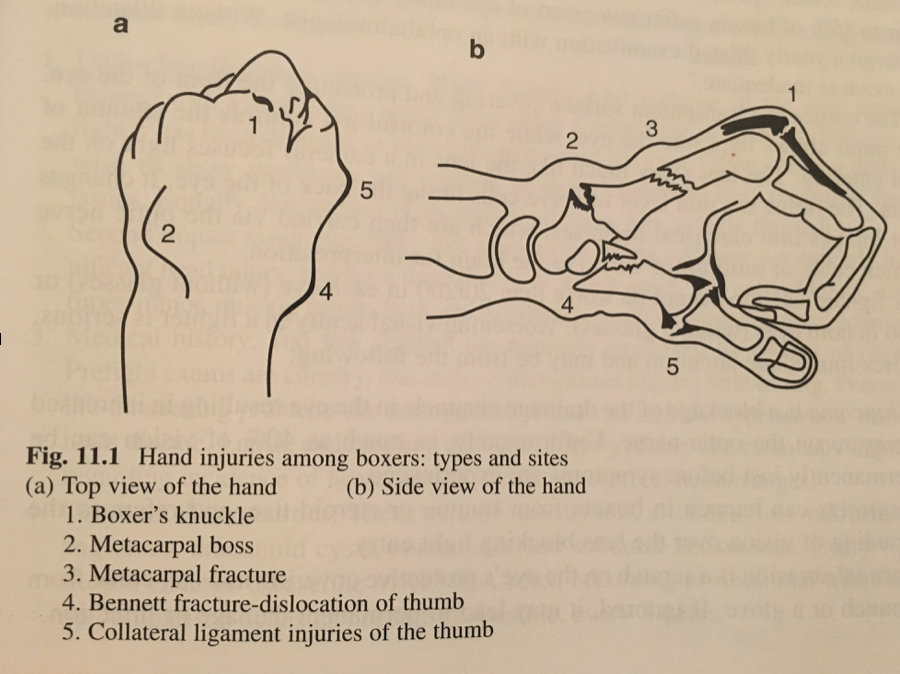
Hand injuries in combat sports
Why can’t I close my fist to punch?
Anatomy: The hand is an incredibly complex network of joints (29), ligaments (126), tendons, muscle (34), bones (29) & fascia. This network allows for the manipulation of really small objects, like threading the eye of a needle, to larger objects and large movement patterns like grabbing the gi of your opponent to control them. Small injuries can turn into big problems if not taken care of, especially in the hand where tiny motions of the joints produce large motions of the bones. A loss of a few degrees of finger flexion could result in the inability to control an opponent or throw an effective punch. Hand injuries can be treated with splinting to prevent structures from being irritated, graded movement to improve healing, activity modification to allow continued practice from refraining from potentially injurious activity and finally, and surgery if the injury is severe enough to warrant it.
Injury:
- Boxers Knuckle: complete or partial tear of the extensor tendon. Typically treated with splinting, casting or surgery in cases of severe instability
- Metacarpal boss injury: tear of the base of metacarpal joint ligaments, often accompanied by painful bump
- Metacarpal fracture: displaced fractures require surgery, non-displaced managed with casting/splinting
- Bennett fracture: fracture at the base of the thumb requires surgery
- Collateral ligament thumb injuries “Gamekeepers thumb” or “Skiers thumb”: disruption of the lateral ligaments resulting laxity of the joint that eventually become stiff and painful
Prevention: improving grip strength and maintaining mobility are important in combat sports to control your opponent, manipulate joints and throw punches. An athlete unable to perform these tasks without complete dedication will be at a serious disadvantage. Exercises such as farmer walks, shoulder shrugs and calisthenics bar-based movements will develop excellent hand strength.
